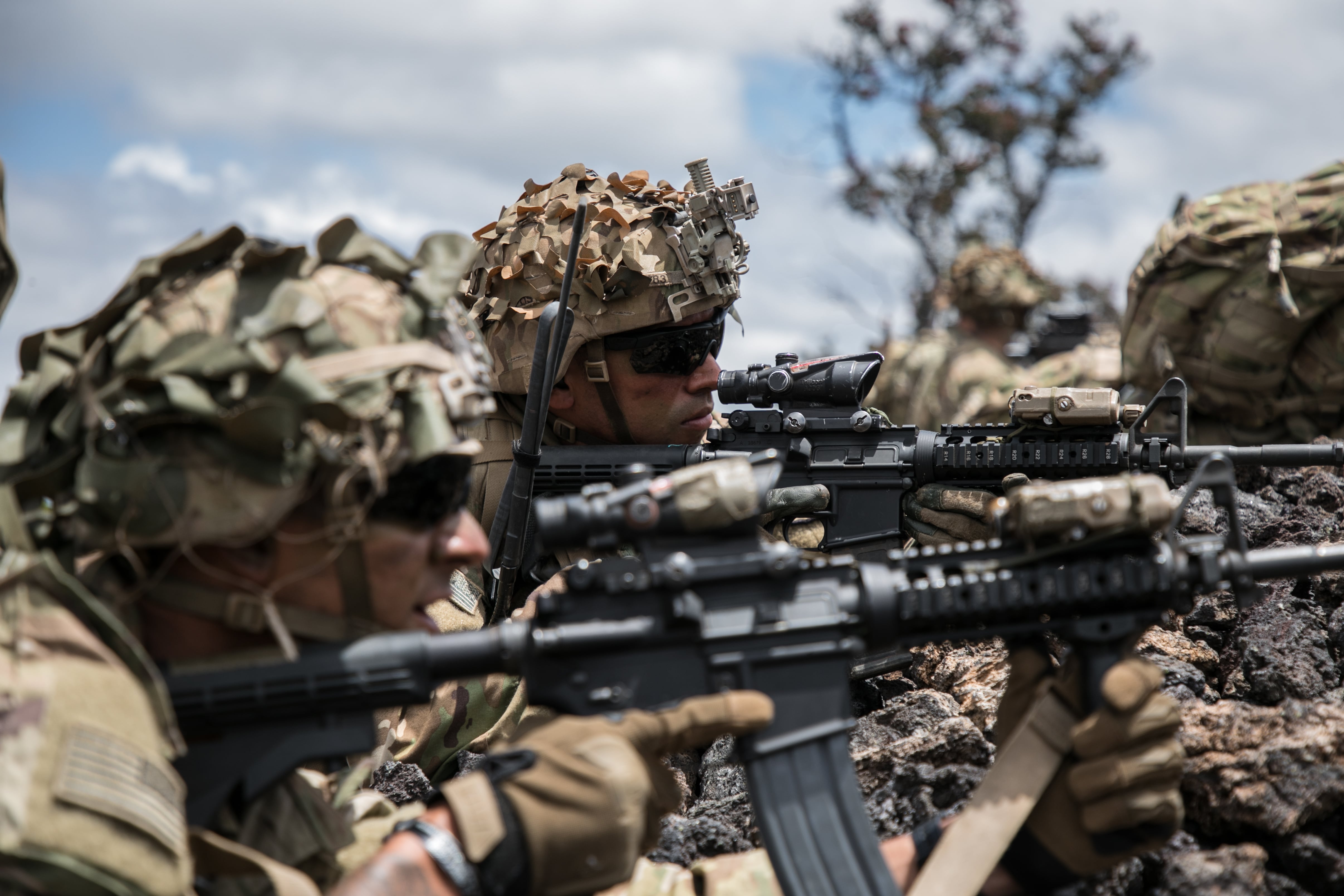A lot of attention in Army modernization often goes to headline-grabbing missile systems or farther shooting artillery, but a piece of gear close to the hearts of most soldiers is their rifle.
There’s a lot being done to transform what the grunts and their close combat companions in special forces, scouts and engineers bring to the fight.
RELATED

Army Times spoke recently with a team of small arms experts at the Soldier Lethality Cross Functional Team, and Program Executive Office-Soldier and the Army Marksmanship Unit about where the Next Generation Squad Weapon program stands and what’s happening next.
Recently the Army down selected to three competitors for prototypes to build both an automatic rifle and a rifle with a common 6.8mm cartridge to replace the M4 for an as yet undetermined number of troops in the Army, Marine Corps and Special Operations Forces.
Those companies are AAI Corporation Textron Systems; General Dynamics-OTS, Inc.; and Sig Sauer, Inc.
Textron unveiled a 6.5mm caseless, telescoped ammunition rifle at the annual AUSA show last year. The GD submission is a bullpup version in which the magazine is loaded behind the handgrip, closer to the shoulder. The Sig Sauer submission has more of a traditional assault rifle build.
The big attention grabber early on with news of the program was the decision to go with an intermediate caliber between the currently fielded 5.56mm and 7.62mm calibers. That floated in the 6mm range for some time but the Army ultimately went with 6.8mm.
There’s some history there.
Some of the work that went into deciding on the 6.8mm caliber round for the NGSW program originated with the Army Marksmanship Unit.
Troy Lawton, an Army veteran, former AMU member and now civilian staffer, helped develop the 6.8mm special purpose cartridge for special operations forces years ago to solve some lethality problems at range that they were having in the M4 platform. Now, that exact round will not be what ultimately becomes the NGSW rifle or automatic rifle, but the beginnings came out of that effort.
Lawton has been part of developing reduced training range variants for that caliber form, which he showed to Army Times. The bullet has a dimpled back end that helps slow it down so that it can retain the same accuracy as a fully powered round with the same recoil but stop shorter than the farther maximum distances that the standard round would shoot and go beyond what many current Army ranges can handle.
The exact specifications of the 6.8mm being provided to industry around which they’ll build the new round and weapon were not disclosed, but Daryl Easlick, test and evaluation specialist with the SL CFT, gave Army Times a shorthand, noting that the 6.8mm SPC was developed for the M4 platform but kind of like a “big brother” to that round.
The new round has other, undisclosed, at-range lethality effects that the Army is trying to achieve while also not overloading the weight of the weapon or the ammunition.
The calendar goal is to have an infantry brigade combat team equipped with the automatic rifle, replacing the current 5.56mm Squad Automatic Weapon, by 2023.
The exact number of rifles to be fielded initially beyond that IBCT has not yet been determined. Col. Elliott Caggins with the SL CFT told Army Times that recommendations from the team would head to senior Army staff by October.
One thing that future automatic riflemen will have, though, is a way to conduct both of their roles. The NGSW-AR will need to have a selector switch so that the shooter can go to semiautomatic when needed, Easlick said.
While the addition of a more accurate, farther shooting rifle and automatic rifle may mean some changes for shooters and different practices on reduced range sites, Easlick said the team has been tied in closely with Army marksmanship developers.
He didn’t envision a “vast overhaul” of Army marksmanship training in the coming years with the new rifle.
Some of the weapon work will also link closely with the work being done by other teams, such as the SL CFT and PEO Soldier on the Integrated Visual Augmentation System, or IVAS.
“Our team is talking with IVAS daily,” Caggins said. “We understand that the fire control and power management piece will interact with the IVAS system, whether displayed in the system or a reticle pattern you can see in the IVAS system and the network.”
While they’re working together, one won’t determine the other’s delivery date.
Sgt. 1st Class Brion Baker told Army Times that they’ve already gotten feedback from a range of soldiers, from the freshest E3 to the senior E6s, mostly in the infantry, scout and engineer military occupational specialties.
Maj. Samuel Butler with PEO Soldier’s next generation weapons program said that a lot will happen with the three companies over the next 27 months.
They’ll do as many “soldier touch points” as vendors are prepared to do, mostly to inform their development process. But in 2020 there will be the first prototype test by the government, followed by a second prototype test to look at technical specifications, controllability and mobility, and a user test.
After that test, in two years, the three companies will be reduced to one for a production contract and unit equipped in 2023.
Todd South has written about crime, courts, government and the military for multiple publications since 2004 and was named a 2014 Pulitzer finalist for a co-written project on witness intimidation. Todd is a Marine veteran of the Iraq War.




